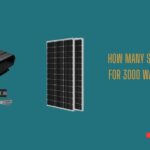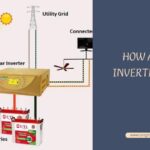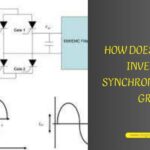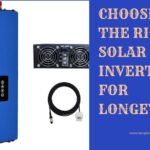How Much is a Solar Inverter? Unveiling the Cost and Benefits
A solar inverter can cost anywhere from $500 to $2,000, depending on the brand, size, and features. Switching to solar power is a smart and cost-effective choice for homeowners and businesses alike.
By harnessing the energy from the sun, you can reduce your reliance on traditional grid electricity and save money in the long run. However, before you dive into the world of solar power, it’s important to understand the components involved in a solar energy system.
One crucial component is the solar inverter. The solar inverter transforms the direct current (DC) energy that solar panels produce into alternating current (AC) energy for use in your home or place of business. But how much does a solar inverter cost? We’ll explore the factors that determine the price of a solar inverter, so you can get a clear idea of what to expect when making this investment.
Understanding Solar Inverters
Solar inverters are essential for converting direct current (DC) power from solar panels into alternating current (AC) power that is suitable for our homes and businesses when it comes to harnessing the power of solar energy. In this article, we will delve into the world of solar inverters, exploring their functionalities, how they work, and the different types available.
How Does a Solar Inverter Synchronize With Grid
How Does a Solar Inverter Work To Convert DC Power Into AC Power?
A solar inverter works through a complex process of conversion and regulation. It runs a number of electronic components and circuits through the DC power that the solar panels generate. These components, such as transistors and capacitors, convert the DC power into AC power by replicating the characteristics of the grid power. The inverter also regulates the voltage, frequency, and waveform of the converted AC power to match the requirements of our electrical system.
Exploring The Different Types Of Solar Inverters And Their Functionalities
There are several types of solar inverters available, each designed for specific applications and energy systems. Understanding the different types can help you make an informed decision when choosing an inverter for your solar energy setup.
- String Inverters: The most common type, these inverters are connected to a string of solar panels and convert the combined DC power into AC power.
- Microinverters: These inverters are attached to each individual solar panel, allowing for independent conversion of DC power into AC power. This optimizes energy production, especially in shaded conditions or when panels have different orientations.
- Central Inverters: Also known as large-scale inverters, these are utilized in utility-scale solar power plants. They effectively convert the DC power that multiple solar panels produce into AC power for the grid.
- Hybrid Inverters: These inverters are designed for systems that combine solar power with battery storage. They enable the system to charge and discharge batteries, supplying power during periods of low solar generation or grid outages.
Each type of solar inverter has its own benefits and considerations, depending on the specific requirements of your solar energy system.
Factors Affecting Solar Inverter Costs
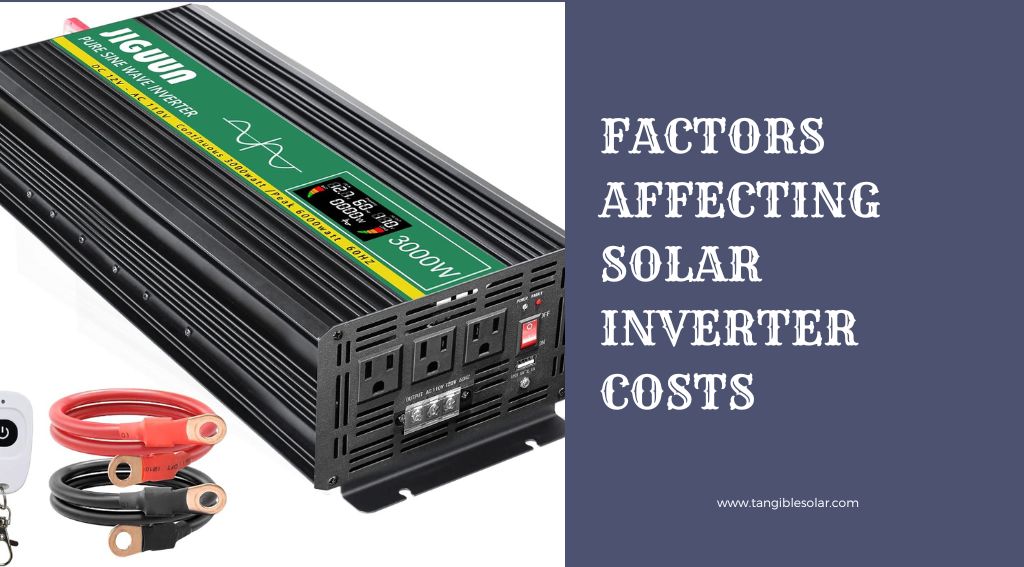
When it comes to investing in a solar power system, understanding the factors that affect the cost of a solar inverter is crucial. The inverter is an essential component of any solar energy system as it converts the direct current (DC) produced by the solar panels into the alternating current (AC) used by our homes and businesses. Several key factors impact the cost of a solar inverter, and in this article, we will explore these factors to help you make an informed decision.
The Impact Of Solar Inverter Capacity On Pricing
The capacity of a solar inverter refers to its power output and determines the size of the solar power system it can support. The higher the capacity of the inverter, the more solar panels it can handle. In general, a higher-capacity solar inverter will come with a higher price tag. It’s important to choose one with the appropriate capacity for your solar power system to ensure optimal performance and efficiency. Matching the capacity to the size of your solar panel array can help you save costs without compromising on functionality.
Discussing The Role Of Efficiency And Quality In Determining The Cost
Efficiency and quality play a significant role in determining the cost of a solar inverter. Higher efficiency means that the inverter can convert a greater percentage of the DC power it receives from the solar panels into usable AC power. While more efficient inverters may have a higher upfront cost, they can help you maximize the energy output of your solar power system over time, resulting in greater long-term savings. Additionally, inverters from reputable manufacturers tend to have higher build quality and reliability, which can also impact the price.
Exploring Additional Features And Technologies That Affect The Price
The additional features and technologies that a solar inverter offers can also affect its cost in addition to its capacity, efficiency, and quality. Some inverters come with integrated monitoring systems that allow you to track the performance of your solar power system in real time. Others may have advanced grid management capabilities or be compatible with energy storage solutions like batteries. These additional features and technologies can enhance the functionality and performance of your solar power system, but they may also come at an additional cost.
It’s important to carefully consider your specific needs and budget when choosing a solar inverter. Assessing the capacity, efficiency, quality, and additional features of an inverter can help you determine its value and suitability. Remember that investing in a high-quality solar inverter may have upfront costs, but it can lead to better long-term energy savings and overall system performance.
Cost Comparison Of Different Solar Inverters
When it comes to installing a solar power system, one of the crucial components you need is a solar inverter that converts the direct current (DC) produced by your panels into usable alternating current (AC) that can power your home. However, the cost of a solar inverter can vary depending on the type and features it offers. In this article, we will analyze the price range of string inverters, explore the cost of microinverters and their advantages, and discuss the pricing of hybrid inverters and their benefits.
Analyzing The Price Range Of String Inverters
String inverters are the most common and traditional type of solar inverter. They are named after the way solar panels are connected in series, forming a “string.” String inverters are known for their efficiency and lower cost compared to other types of solar inverters.
When it comes to the price range of string inverters, it can vary based on the brand, capacity, and additional features. On average, the cost of a string inverter can range from $500 to $2,500. Keep in mind that the cost may vary depending on the size of your solar installation and the specific requirements of your project.
Exploring The Cost Of Micro Inverters And Their Advantages
Micro inverters are a newer technology in the solar industry. Unlike string inverters, micro inverters are installed on each individual solar panel, allowing for greater flexibility and optimized power output.
Micro inverters tend to be slightly more expensive than string inverters. On average, the cost of a micro-inverter can range from $100 to $300 per panel. This means that if you have a larger solar installation, the cost of micro-inverters can add up. However, microinverters offer several advantages.
The advantages of microinverters include:
- Enhanced panel-level monitoring and optimization
- Increased system resilience against panel shading or malfunctions
- Improved energy harvest in less-than-ideal conditions
- Flexible system design and scalability
Discussing The Pricing Of Hybrid Inverters And Their Benefits
Hybrid inverters, also known as multi-mode inverters, are designed to work with both solar power and energy storage systems, such as batteries. These inverters allow you to maximize the self-consumption of solar energy and provide backup power during outages.
Hybrid inverters are typically pricier than string inverters and micro inverters due to the additional functionality they offer. On average, the cost of a hybrid inverter can range from $1,000 to $5,000, depending on the capacity and features.
The benefits of hybrid inverters include:
- Increased energy independence and self-sufficiency
- Ability to store excess solar energy for later use
- Backup power during grid outages
- Optimized energy consumption and cost savings
When considering the cost of a solar inverter, it’s important to evaluate both the initial investment and the long-term benefits it can provide. Factors such as efficiency, warranties, and overall system performance should also be taken into account. Ultimately, choosing the right solar inverter for your specific needs and budget is crucial for maximizing the return on your solar investment.
Installation And Maintenance Costs
Installing a solar inverter is a crucial step towards harnessing the power of the sun and reducing your reliance on fossil fuels. Understanding the installation process and associated costs can help you make an informed decision. Additionally, regular maintenance is essential to ensure your solar inverter operates optimally throughout its lifespan. Let’s delve into the details of installation and maintenance costs, as well as the options available.
Understanding The Installation Process And The Associated Expenses
The installation process of a solar inverter involves several key steps that require professional expertise. These include:
- Site assessment: A qualified technician assesses your property to determine the most suitable location for the solar inverter installation. Factors such as shading, roof orientation, and available space impact the overall efficiency of the system.
- Inverter sizing: Based on your energy consumption needs and the size of your solar panel system, the technician determines the appropriate capacity for the
- Mounting and wiring: The solar inverter is securely mounted and connected to the grid connection and other electrical components.
- Permitting and inspections: Depending on your location, obtaining permits and scheduling inspections may be necessary to ensure compliance with local regulations.
While the cost of installation varies depending on factors such as system size, complexity, and geographical location, you can expect to invest between $1,000 and $3,000 for the professional installation.
Exploring The Cost Of Professional Installation vs. Diy Installation
Installing a solar inverter may seem like a tempting DIY project for some, but it’s important to consider the risks and complexities involved. Professional installation offers numerous benefits:
- Expertise: Trained professionals possess the knowledge and skills to ensure a safe, efficient, and compliant installation.
- Warranty protection: Most manufacturers require professional installation to maintain the inverter’s warranty coverage.
- Time and convenience: Professionals handle the entire installation process, saving you valuable time and effort.
While DIY installation may save upfront costs, improper installation can lead to system malfunctions, safety hazards, and the potential voiding of warranties. It’s recommended to opt for professional installation to guarantee a seamless and reliable solar inverter system.
Discussing The Importance Of Regular Maintenance And The Related Costs
Regular maintenance is crucial to keeping your solar inverter performing at its best and maximizing its lifespan. Maintenance tasks may include:
- Cleaning: Regular cleaning of solar panels helps remove dust, dirt, and debris that may hinder system performance.
- Inspections: Scheduled inspections allow technicians to identify any issues or potential defects early on.
- Software updates: Keeping the inverter’s software up to date ensures compatibility with the latest technologies and optimizes its performance.
While the cost of maintenance depends on various factors, including system size and the specific maintenance services required, anticipate annual maintenance costs ranging from $100 to $300.
By investing in regular maintenance, you can extend the lifespan of your solar inverter, maximize its energy production, and ensure it operates efficiently for years to come.
The Benefits Of Investing In A Solar Inverter
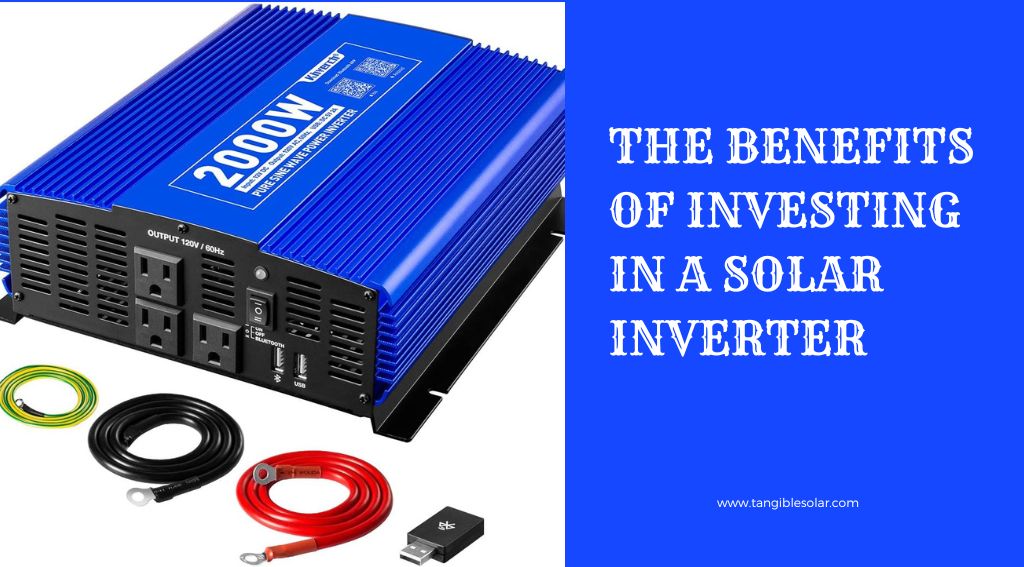
When it comes to harnessing the power of solar energy, a solar inverter is an essential component of any solar panel system. While the initial investment may seem daunting, the benefits it offers make it a worthwhile and cost-effective choice in the long run.
How to Connect Solar Panel Inverter And Battery
Highlighting The Financial Benefits Of Solar Inverters
One of the significant financial advantages of investing in a solar inverter is the potential for energy savings. Solar inverters convert the direct current (DC) generated by solar panels into usable alternating current (AC), which can power your home or business. By utilizing this converted energy, you can significantly reduce your reliance on traditional utility sources and consequently save on your monthly utility bills. This not only helps to lower your overall energy costs but also provides you with a renewable and sustainable energy source for years to come.
Environmental Advantages Of Solar Inverters
Investing in a solar inverter also comes with significant environmental benefits, starting with a reduced carbon footprint. When you switch to solar energy, you decrease your dependence on fossil fuels for electricity generation. As a consequence, you contribute to the reduction of greenhouse gas emissions, helping combat climate change and create a cleaner and healthier environment for future generations. Furthermore, solar inverters enable you to generate sustainable energy from sunlight, a renewable resource that will never deplete, ensuring a greener and more sustainable energy future.
Exploring The Potential For Grid Independence And Backup Power
In addition to the financial and environmental advantages, investing in a solar inverter can also provide you with the potential for grid independence and backup power. With a solar inverter system integrated into your solar panel setup, you have the ability to generate electricity, reducing your reliance on the traditional power grid. This independence can be particularly valuable during power outages or emergencies when the grid fails, allowing you to continue powering essential devices and appliances in your home or business. Having a solar inverter as part of your solar panel system ensures that you have a reliable and uninterrupted power supply when you need it most.
In conclusion, while the cost of a solar inverter may seem significant initially, the long-term benefits it offers make it a valuable investment. From financial savings through reduced energy costs to environmental advantages like a reduced carbon footprint and the potential for grid independence and backup power, it provides numerous benefits for both homeowners and businesses alike. With these advantages in mind, investing in a solar inverter is a smart and sustainable choice for anyone looking to make a positive impact on their energy consumption and embrace the power.
Frequently Asked Questions On How Much Is A Solar Inverter
How much does a solar inverter cost?
The cost of a solar inverter can vary depending on factors such as size, brand, and features. On average, a solar inverter can cost anywhere from $500 to $2000. It’s important to consider the quality and reliability of the inverter when making a purchase decision.
What is the lifespan of a solar inverter?
The lifespan of a solar inverter typically ranges from 10 to 15 years. However, this can vary based on factors such as the quality of the inverter, maintenance, and external conditions. Regular maintenance and monitoring can help extend the lifespan of the inverter.
Can I install a solar inverter myself?
While it is possible to install a solar inverter yourself, it is generally recommended to hire a professional to ensure proper installation and safety. Solar inverters require knowledge of electrical work, wiring, and system configuration. Professional installation can also help you benefit from warranties and expert guidance.
Conclusion
To sum up, solar inverters play a vital role in converting the sun’s energy into usable electricity for homes and businesses. By considering the factors discussed throughout this blog post, such as efficiency, capacity, and price, individuals can make an informed decision when purchasing.
Remember to assess your specific energy needs and budget to find the best option that aligns with your sustainability goals. Switching to solar power not only helps to reduce carbon emissions but also provides long-term savings on energy bills. Embrace the solar revolution and make a positive impact on the environment!

